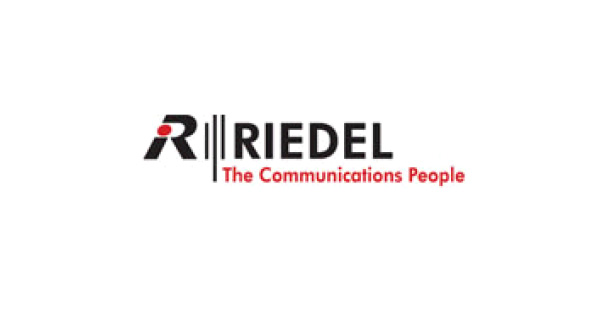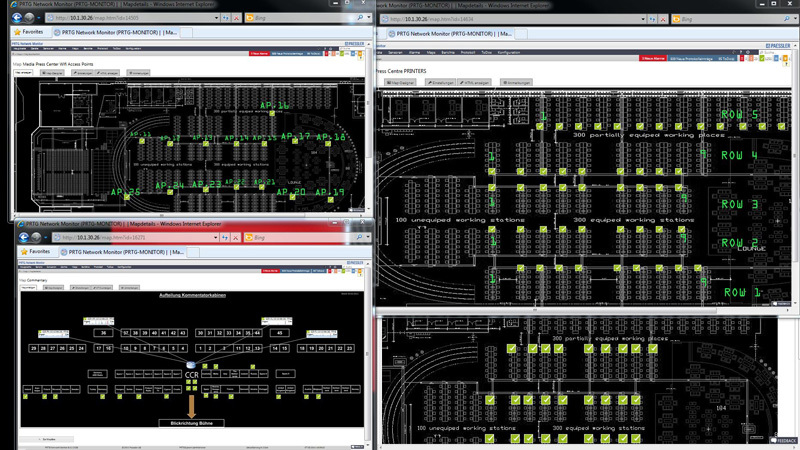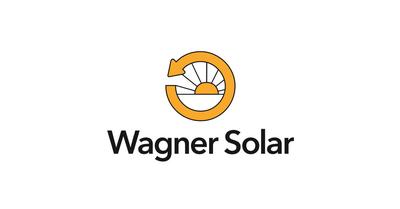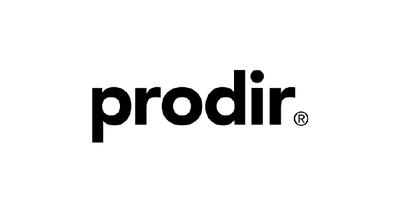12 points for the duet Riedel and Paessler PRTG at the 2011 Eurovision Song Contest
About Riedel Communications
The 56th edition of the international Eurovision Song Contest (ESC) took place in May 2011. It was held at Düsseldorf Arena in Düsseldorf, Germany, where artists from more than 25 nations competed for the top prize. From a technical standpoint, the 2011 event surpassed all the televised events of previous years.
Riedel Communications GmbH & Co.KG, a company from Wuppertal, Germany, was responsible for distributing all the audio, video, radio, and data for the live production, as well as for the televised transmission of the event around the world.
Luckily, Riedel was not alone. Instead, it performed as a “duet” with the PRTG Network Monitor monitoring tool from Paessler AG, which allowed its technicians to keep a constant eye on the more than 5,500 IP addresses, among other things.
It goes without saying that the technology for a major event such as the Eurovision Song Contest, which not only attracts 22,000 visitors on site but a TV audience of 114.5 million, must function without a glitch. Riedel set up a network based on its own MediorNet for the transmission of audio, video, radio, and data at the event. This network served as a working basis for many employees on site, including the sound engineer, video operator, press staff, and assistant director of production.
At Düsseldorf Arena, a traditional soccer stadium that was overhauled for the competition, artists from 43 countries performed their songs during a show that lasted more than four hours on May 14, 2011. In Germany alone, approximately 16 million people watched the show on TV during the peak moments. In total, construction workers needed around six weeks to refurbish the 36,000-capacity arena. The stage (the focal point of the show) was built with a diameter of 13 meters (43 feet). Behind it, spectators were treated to a gigantic LED wall measuring 18 meters (59 feet) in height and 60 meters (197 feet) in width. In addition to lighting effects, which were complemented by 2,200 spotlights around and above the stage, videos were played on the wall to create the desired atmosphere.

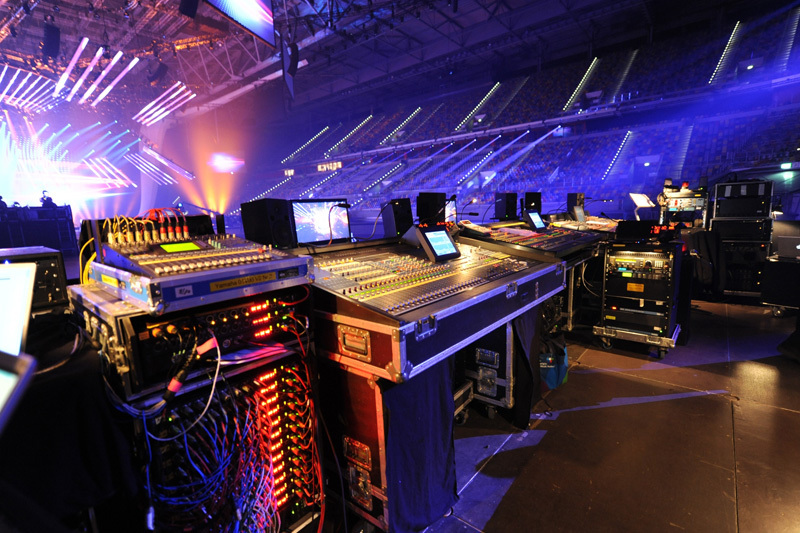
Riedel Communications set up a vast communications and transmission network (one of the largest MediorNet networks ever used by the company) to broadcast the live event to the millions of viewers who watched from home on TV. Among other things, this network included 25 cameras, two steadicams, two wireless (portable) cameras, four camera cranes, and a so-called “spidercam,” a suspended camera system allowing for shots to be taken from every angle in the arena. The action was also recorded by a camera on a vertical, 12 meter (39 foot) slider, as well as a “high-speed rail and tower cam.” During the show, another camera moved on a slider around the stage to capture the performances.
“The PRTG Maps feature was particular vital for this event, as it provided us with incomparable overviews of the space and equipment. We made the maps available to the operators of the various locations in the arena. The flat screens, PRTG maps, and press center made quite an impression among the technicians, and highlighted the importance of centralized monitoring to the production of a televised event.”
Jonathan Salim, System Administrator at Riedel
Press center
Riedel technicians also outfitted the track & field area of the arena with 1,500 workstations, providing journalists with a press center for the entire duration of the competition. 2,500 journalists from all over the world worked and reported from this location. The Internet connection was provided by Riedel’s MPLS Cloud, which establishes data connections to every part of the globe. All the journalists benefited from a 4 x 1 Gb Internet connection. Riedel also installed 38 wireless access points for wireless Internet and mounted 120 8-way switches for tabletop cabling.
The journalists had access to 80 networked laser printers with redundant IPP (Internet Printing Protocol) print servers, connected fax machines, and 120 VoIP phones. Riedel also provided 110 ISDN So sockets for the TV and radio audio transmissions. All this resulted in a setup with technology that rivaled some of the world’s best press centers.
The company Aggreko installed eight connected diesel generators to ensure sufficient power was available at all times. The arena and TV area were supplied with six megawatts of electricity by way of 35 kilometers of power cables.
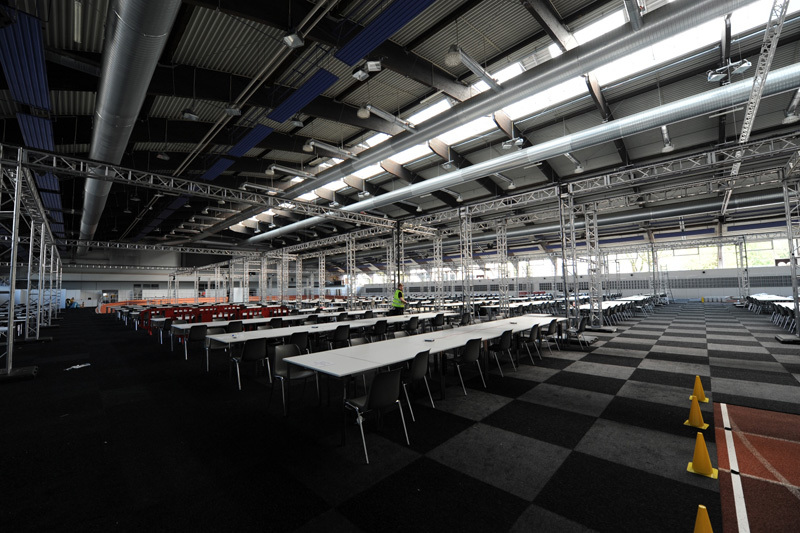
5,000+ monitoring points
The communications network was mainly composed of MediorNet and RockNet systems, two of Riedel’s own developments. MediorNet is an integrated, real-time network solution that combines signal transmission (video/audio/communication/data) with routing and signal processing & conversion. Among other things, MediorNet allowed Riedel to process all the camera signals. Its technicians set up 63 frames that formed a redundant, dual-fiber ring.
Using a six-port Ethernet card, Riedel’s experts expanded the connectivity options of MediorNet by creating six 1 Gb Ethernet ports with transparent tunneling. These fully configurable ports made it possible to optimize the use of the fiber. The audio engineers used the built-in signal routing to distribute each input signal to one or more outputs – with a simple click of a mouse or – even more conveniently – via a router control system.
Riedel used a combination of MediorNet and RockNet to transmit the audio signals. RockNet is a real-time audio network solution designed especially for fixed and mobile installations. It combines complex digital signal transmission with the resilience and user-friendliness of analog solutions. Technicians can choose between two modes of operation, with RockNet simultaneously transmitting 160 channels at 24bit/48kHz or 80 channels at 24bit/96kHz on a CAT 5 line. All RockNet rings installed at Düsseldorf Arena were connected to MediorNet. This allowed the audio network to record approx. 1,200 audio signals from a wide variety of formats, and feed them to the respective receivers. 200 RockNet components were needed to accommodate the size and scope of the infrastructure.
The entire data and communications network contained a total of 5,500 IP addresses, which had to be monitored continuously. In particular, SNMP-based queries of the switches, RockNet devices, and MediorNet switches, firewalls, etc., provided for an accurate overview of the status of the entire network.
With SNMP alone, the teams could keep a constant eye on the paper quantities and ink levels of the 80 printers. After the event, the traffic was reanalyzed to provide Riedel with data that will help them plan events of a similar size in the future. SNMP was also used for AP queries, allowing Riedel to keep an eye on the number of clients (devices) that connected to any of the APs.
For these queries, Riedel used PRTG from Paessler, a monitoring solution that the company from Wuppertal had already used repeatedly for many of its large-scale events. Due to the enormous scope of the infrastructure in use at Düsseldorf Arena, Riedel opted for a license of PRTG, which let them monitor as many points in the network as needed. In particular, it was important that the Paessler tool monitor the control network during the event. While setting up the infrastructure, the teams used the software to help with tests and error analyses so corrections could be made early on (if necessary).
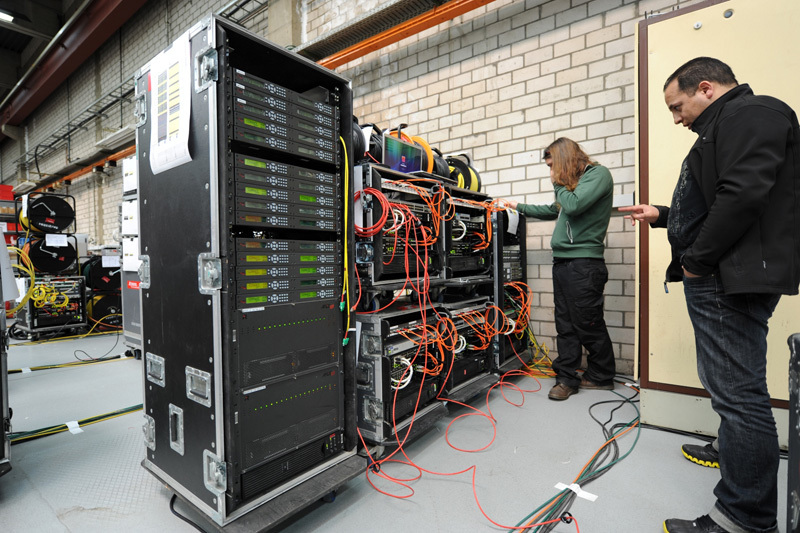
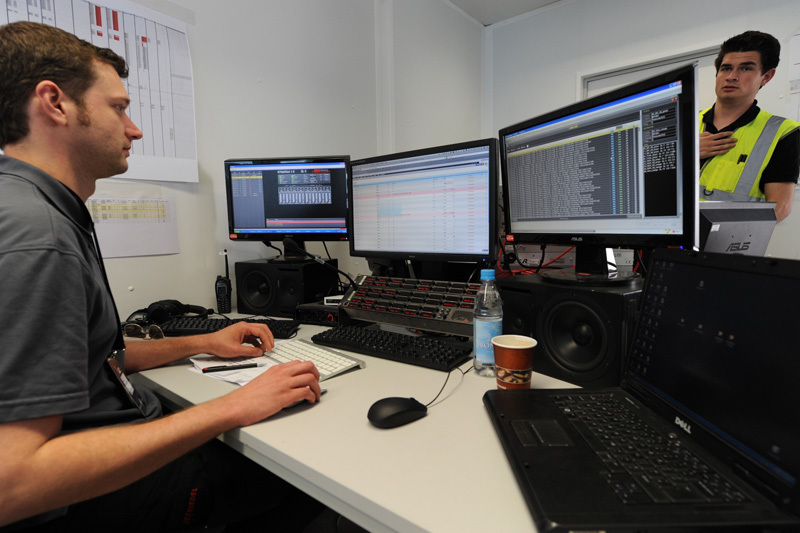
Optimized operations with PRTG
PRTG kept a constant eye on all IT functions, as well as all the connections of the individual areas. The software acted as a central control unit, thereby guaranteeing the steady transmission of data – even in the event of failures. PRTG network monitoring is made unique by its ability to be set up as a failover cluster solution. Up to five PRTG server installations (as network nodes) form a failover monitoring system, allowing for a backup installation to take over as the main server, and continue monitoring in the event of a system crash or other failure. PRTG is preventive monitoring software: it not only sounds the alarm if a disruption has already occurred, but also if a disruption is imminent, allowing the respective personnel to quickly take action before the problem becomes more serious. The tool also alerts the administrator if a predefined threshold value is reached, e.g., in the case of a parameter such as bandwidth.
Conclusion
“Due to the size of the infrastructure and the transmission time (which lasted for several hours), PRTG was definitely under the gun. However, the software proved more than capable for the task at hand,” concludes Jonathan Salim. “We’ve been working with the Paessler solution for some time now, and are extremely satisfied with the tool. PRTG was a great help to us – both before and during the event – as it provided us with precise insight into the highly branched network in use for the Eurovision Song Contest. The feedback we received from the NDR and the arena operator was extremely positive.”
The network and communications infrastructure also drew praise from members of the EBU (European Broadcasting Union), an association of 75 broadcasters from 56 countries in Europe, North Africa, and the Middle East. In addition to the top-prize winners from Azerbaijan, another duet therefore made a splash at the event: “12 points go to...Riedel and PRTG!”
Get to know more happy PRTG customers
Customer success story Wagner Solar & PRTG
Solar pioneer Wagner Solar monitors its corporate IT across all locations with PRTG. ➤ Read the complete customer success story now!
Customer success story UPLINK & PRTG
The UPLINK transmitter network operator needs to transmit without signal interference. PRTG takes over the decentralized infrastructure’s monitoring. ➤ Read the complete customer success story now!
Customer success story Prodir & PRTG
The Swiss company Prodir needed too much time to identify IT errors in its network. Now PRTG takes care of this. ➤ Read the complete customer success story now!
